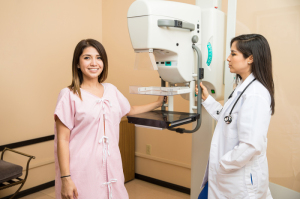From the July 2017 issue of HealthCare Business News magazine
By Julie Johnson
Analyst, MD Buyline
The women’s health market is very active and continues to grow, especially since the introduction of digital breast tomosynthesis (DBT) technology in 2011 by Hologic.
Over the past several years only a few other vendors have entered the DBT market, making it highly competitive.



Ad Statistics
Times Displayed: 109208
Times Visited: 6638 MIT labs, experts in Multi-Vendor component level repair of: MRI Coils, RF amplifiers, Gradient Amplifiers Contrast Media Injectors. System repairs, sub-assembly repairs, component level repairs, refurbish/calibrate. info@mitlabsusa.com/+1 (305) 470-8013
The major players in the DBT mammography market include Hologic, GE Healthcare and Siemens. These three vendors have been competing for market share now that each has added a dedicated DBT system to its product lineup. Fuji introduced its Aspire Cristalle DBT system in January 2017. With the addition of Fuji’s platform, there is now a much needed boost of competition entering the 3-D mammography market.
The trend has continued over the past several years, with DBT remaining the primary technology of interest when considering a mammography system. Clinical trials continue to show the benefits of using a 3-D system over a conventional 2-D full-field digital system. Studies continue to demonstrate that 3-D mammograms find more cancers and also diminish the number of false positives.
MD Buyline quote activity shows a steep decline in interest for 2-D full-field digital systems. The market reflects a combination of more highly configured DBT systems that include CAD, 2-D synthesized imaging software, advanced workstations and breast biopsy, as well as more basic configurations, depending on budget constraints and facility needs.
Pricing for a 2-D system is approximately $300,000 for a standard configuration. Pricing for a 3-D system ranges on average from $400,000 to $450,000. However, the steeper price tag has not been a deterrent for facilities wanting to purchase a highly sought-after 3-D system.
Facilities considering a mammography system often bundle their purchases with other women’s health equipment such as a biopsy or bone density system. Since the April 2016 release of Hologic’s prone biopsy table, which offers 3-D image quality, interest and quote activity have continued to grow for this platform. However, based on MD Buyline quoting activity, customers also still frequently express interest in purchasing the 2-D upright system as an addition to their new DBT mammography system. Hologic is the only vendor tracked by MD Buyline for breast biopsy.
Bone density systems are a small, but important, part of the women’s health market, especially for those patients at risk for osteoporosis and bone fracture. The two active vendors in this market are Hologic and GE Healthcare, with competition between the two remaining fairly even. Fan-beam technology is the main segment of interest for the majority of customers. A very small portion of the activity is still focused on peripheral scanners. The latest area of interest in bone density technology remains Fracture Risk Assessment (FRAX) and metabolic DEXA scan for body composition, which measures visceral fat and can help assess risk factors for obesity and other metabolic conditions.

